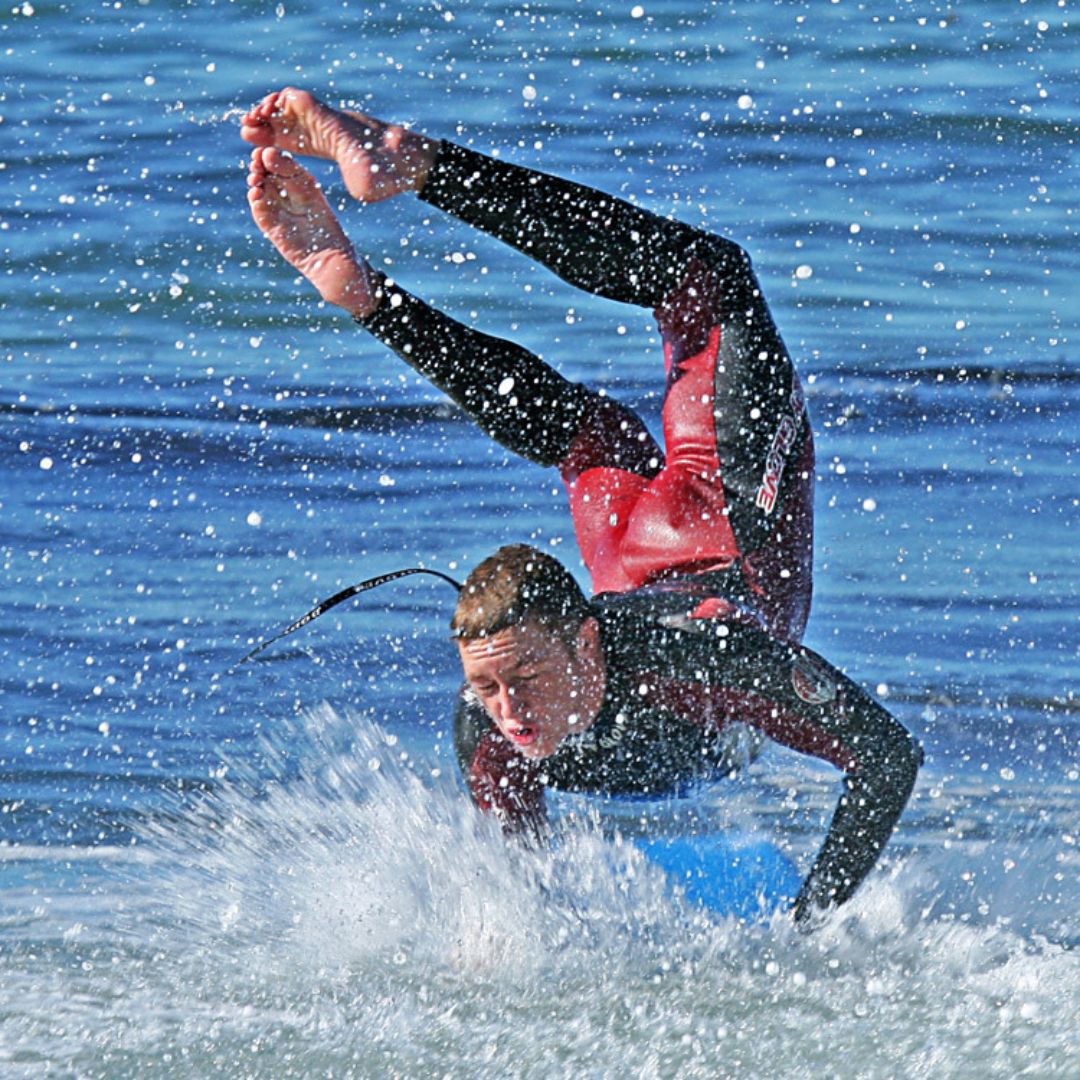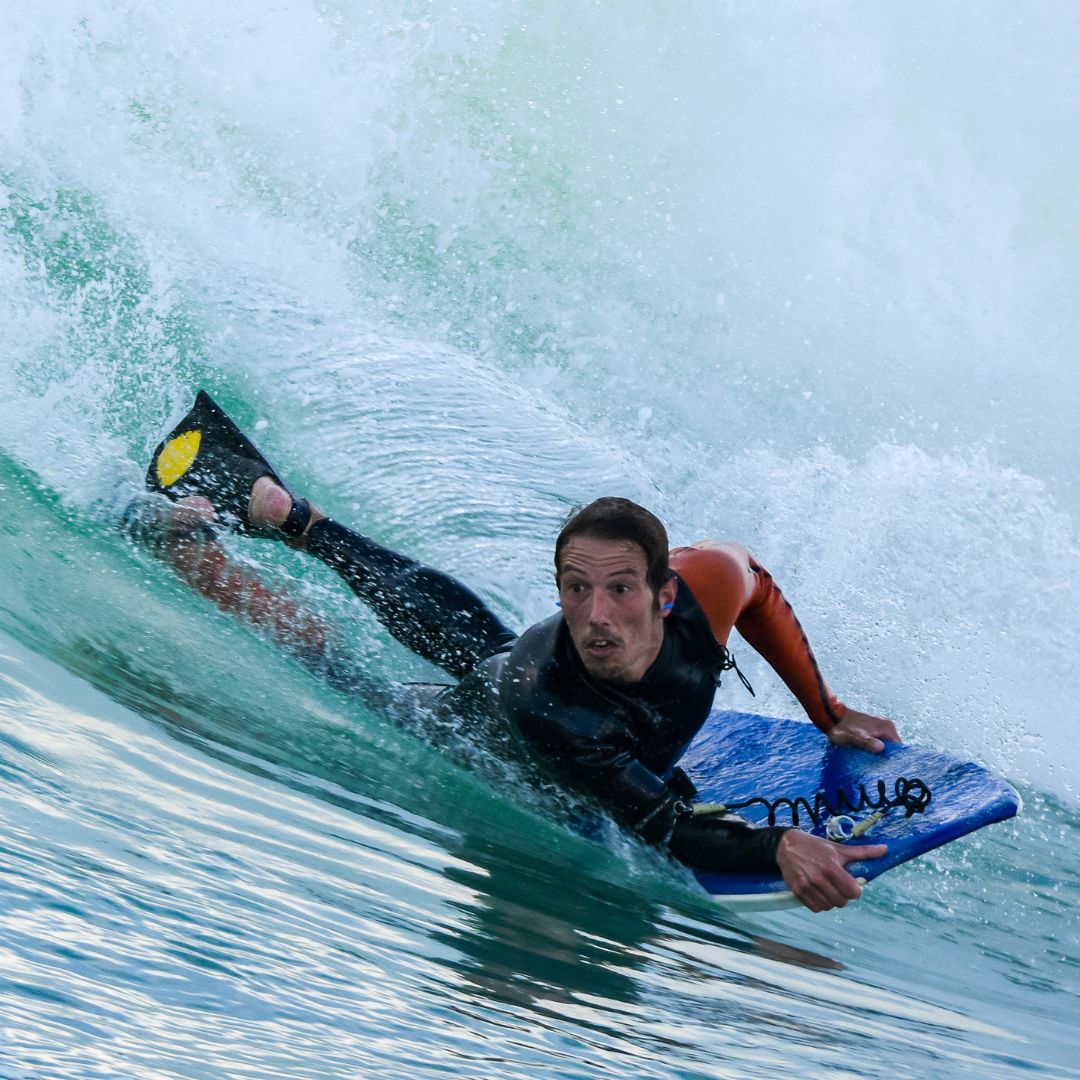What Size Bodyboard Do I Need – It’s Not Just About Guessing
What size bodyboard do I need? Funny you ask — because if we had a nickel for every time someone confused their boogie board with a glorified pool float, we’d be riding waves in gold-plated wetsuits.
Choosing the wrong bodyboard size can make your surf day feel like riding a slippery ironing board on the open ocean. Too small, and you’ll sink like a stone. Too big, and you’ll be waving at the waves as they pass you by.
So, let’s settle it: what size bodyboard do I need if I want to catch waves and look like I didn’t just borrow my nephew’s beach toy? Strap in — we’re about to break it all down.
What Size Bodyboard Do I Need? (Here’s the Real Answer)
The ideal bodyboard size depends primarily on your height and weight, with a sprinkle of surf conditions and experience level mixed in. Here’s the simple truth:
- Stand your bodyboard upright. The top should reach your belly button.
- Or more precisely:
Board length = between your knees and your belly button.
Use this quick rule of thumb for height-to-board length:
| Your Height | Recommended Bodyboard Size |
| 4′ – 4’4″ | 33″–36″ |
| 4’4″ – 5′ | 37″–39″ |
| 5′ – 5’4″ | 39″–41″ |
| 5’4″ – 5’8″ | 40″–41″ |
| 5’8″ – 6′ | 41″–42″ |
| 6′ – 6’2″ | 42″–43″ |
| 6’2″+ | 43″+ |
👉 Body weight matters too: If you’re on the heavier side for your height, size up for more buoyancy. A 40 inch bodyboard might work for someone at 5’5” and 140 lbs, but not at 190 lbs — they’ll need a thicker board or longer length for proper float.
Now let’s unpack why this matters — and dig into all the stuff the size chart doesn’t tell you.
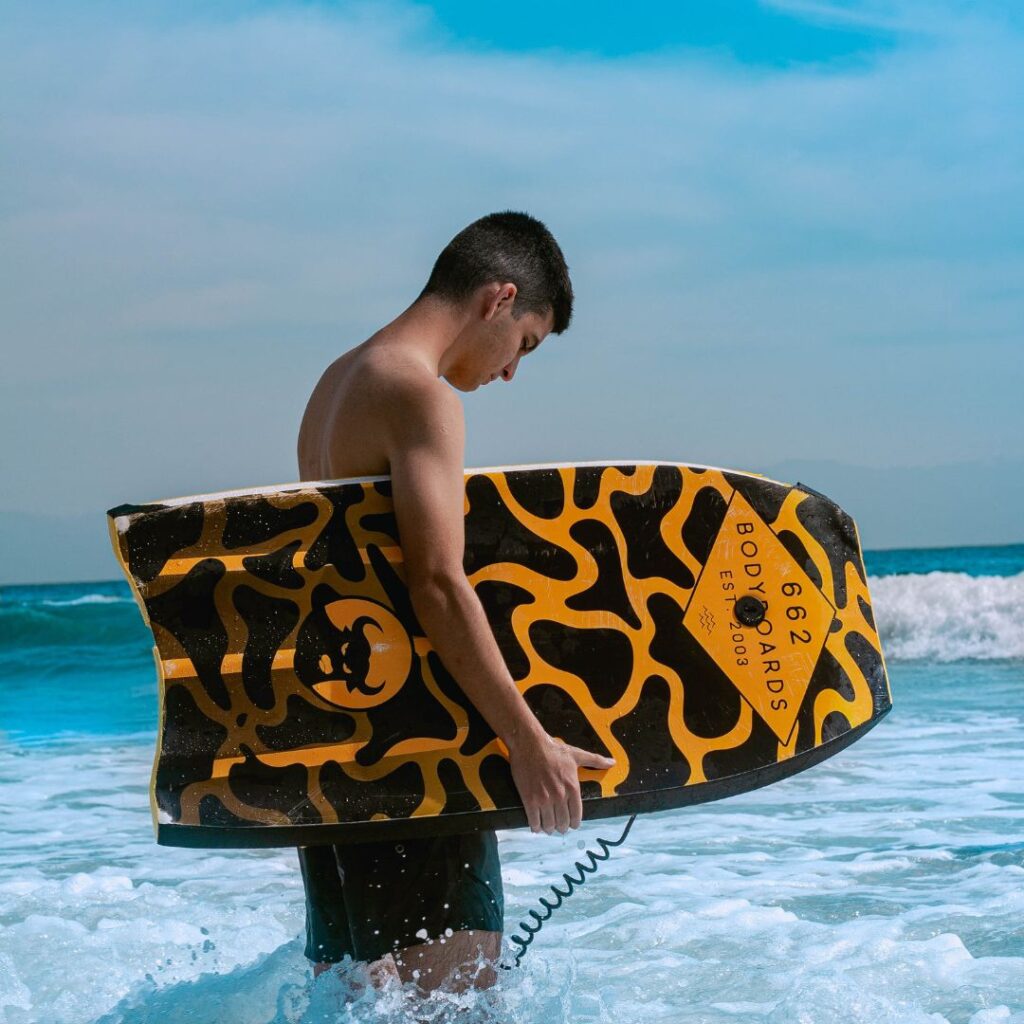
Understanding Bodyboard Sizing: Why It’s Not One-Size-Fits-All
Sure, there’s a bodyboard size guide, but many people still struggle because the ocean doesn’t care about your chart. That’s where bodyboard sizing gets interesting.
Here’s what size affects:
- Maneuverability: Smaller boards are easier to whip around.
- Speed and control: Larger boards are better at floating and catching slower, mushier waves.
- Wave compatibility: Bigger waves? You might want more control (slightly smaller board). Smaller waves? Go bigger for extra float.
💡 Pro tip: If you’re in between sizes, go up for beginner comfort, or down for advanced tricks.
Boogie Board Sizes vs. Bodyboard Sizing: Is There a Difference?
Here’s a juicy truth: bodyboard vs boogie board is more about language than product.
- “Boogie board” is just the casual or brand-name version (thanks, Morey Boogie).
- “Bodyboard” is the proper surf term, especially when you’re shopping high-performance models.
However, in casual use:
- “Boogie board sizes” often refer to kid-friendly or cheap foam boards from big-box stores.
- “Bodyboard sizing” refers to boards built for real wave riding, made with cores like EPS or PE, and often more durable.
So, if you’re Googling boogie board sizes to get serious about the waves — switch over to bodyboard size guide content instead.
READ ALSO: How to Bodyboard
How Weight Plays Into What Size Bodyboard You Need
Think about it this way: your bodyboard has to keep you afloat and accelerate you into the wave. Weight affects:
- Buoyancy
- Speed into wave takeoff
- Control on wave face
Here’s a weight-based quick glance for a standard board thickness:
| Your Weight | Recommended Length |
| Under 65 lbs | 33″–36″ |
| 65–85 lbs | 37″–39″ |
| 85–115 lbs | 39″–40″ |
| 115–140 lbs | 40″–41″ |
| 140–170 lbs | 41″–42″ |
| 170–200 lbs | 42″–43″ |
| 200+ lbs | 43″–45″+ |
➡️ If you’re above average weight for your height, size up or go with more thickness.
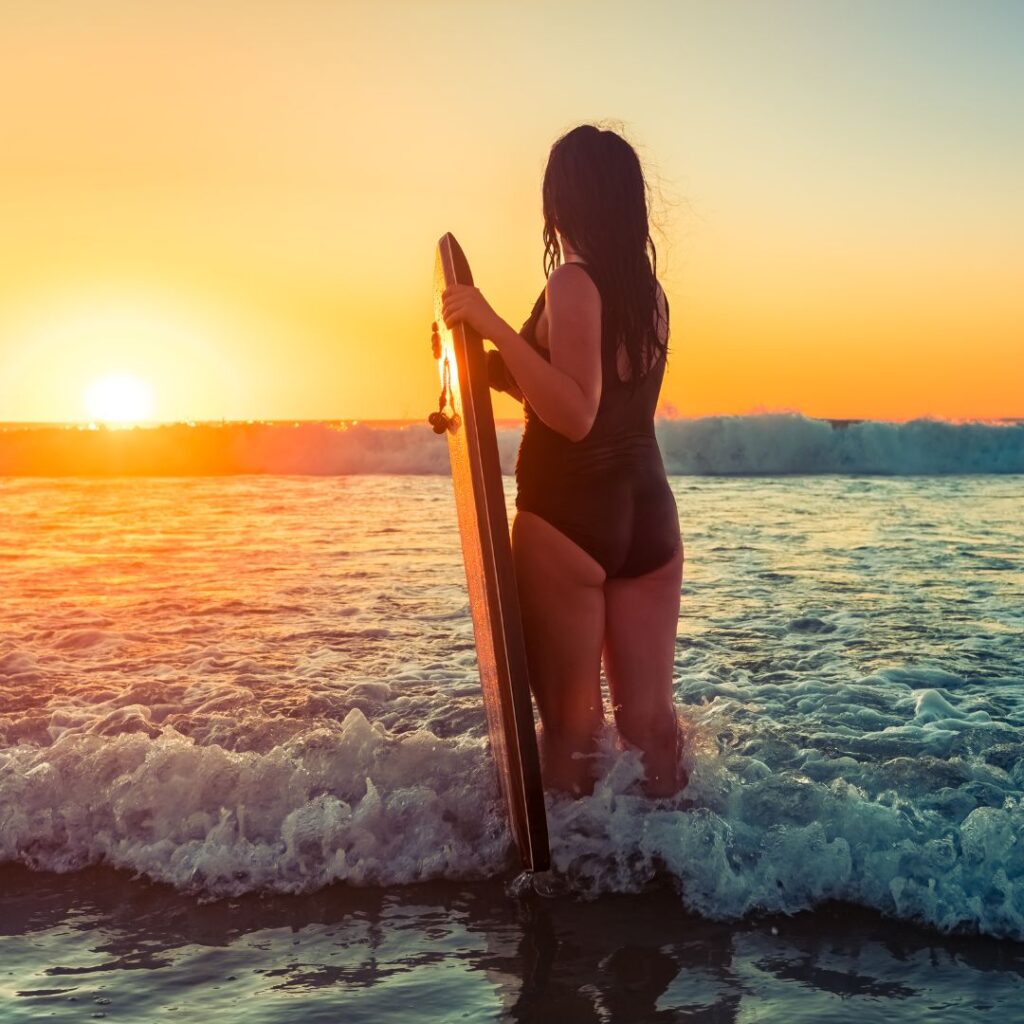
The 40 Inch Bodyboard Sweet Spot: Why It’s the Most Popular Size
Let’s talk about the 40 inch bodyboard — it’s basically the Swiss Army knife of bodyboard sizing.
Why is it so popular?
- Ideal for riders 5’5” to 5’9”
- Balanced for speed, control, and portability
- Works well for both small and mid-range surf
It’s the go-to size for first-time adult riders who want one board that “does it all” without doing the math.
Kids & Teens: Sizing for Growing Groms
Buying for kids? Let’s help you avoid the “too small by next summer” trap.
For Children:
- Ages 3–6 → 30–33″
- Ages 6–9 → 33–36″
- Ages 9–12 → 36–38″
- Teenagers → Use the height/weight chart
💡 Pro tip: Choose slightly larger if they’re confident swimmers or likely to grow quickly. Better too big than sinking small.
Surf Style Matters: Prone vs. Drop Knee vs. Stand-Up
Are you a casual wave cruiser or trying to launch backflips like a bodyboarding boss?
Riding Style Affects Sizing:
- Prone (lying down) → Standard size
- Drop Knee (one knee up) → Slightly longer board for stability
- Stand-up bodyboarding → Longer and wider boards with stiff cores
Beginners riding prone will benefit most from medium-to-large sizes for control and floatation.
Wave Conditions: One Size Doesn’t Fit All Surf
When asking what size bodyboard do I need, most people forget the waves are part of the equation.
Small Waves (1–3 ft)
- Bigger board = better float
- More speed on soft waves
Medium Waves (3–6 ft)
- Medium-sized board = perfect balance
- 40–42” is often the sweet spot
Heavy Waves (6+ ft)
- Shorter, stiffer boards for better control
- Not ideal for beginners
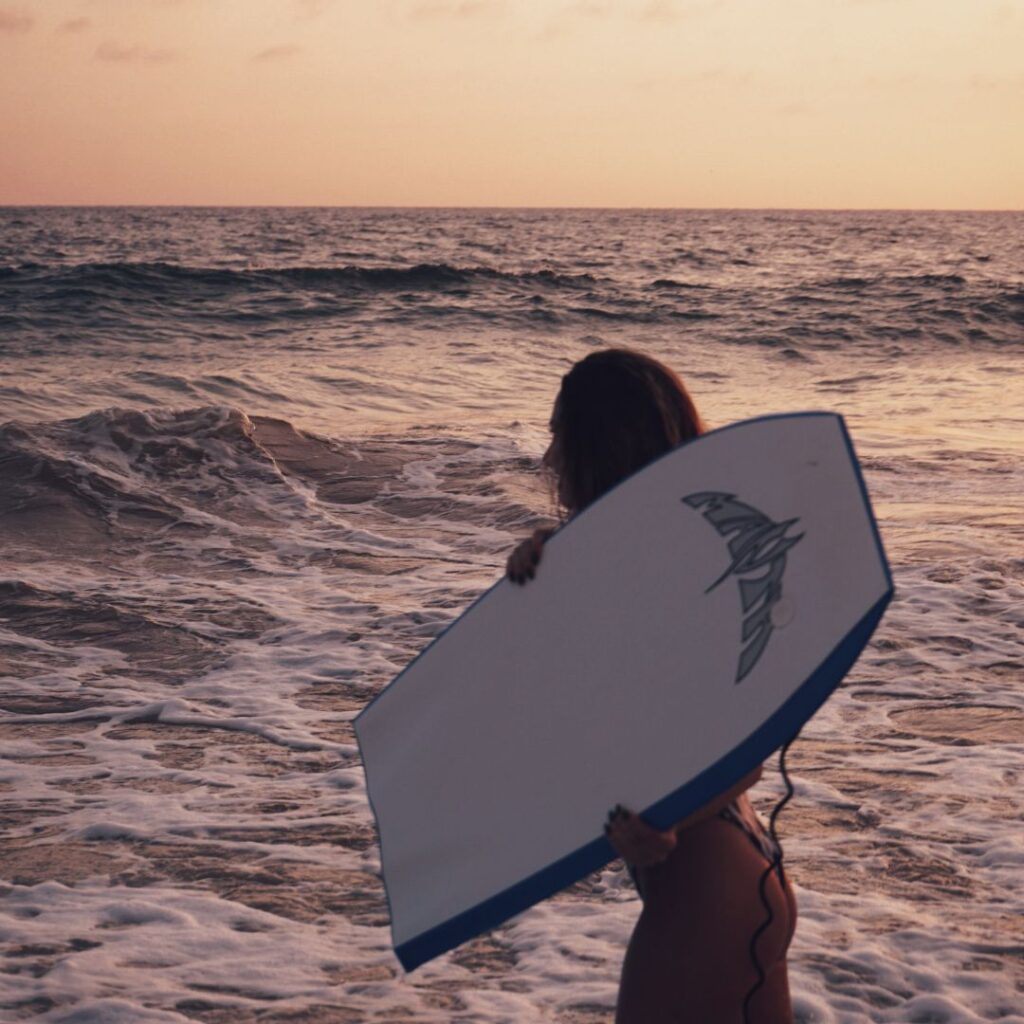
Big and Tall Riders: Sizing Without Compromise
If you’re over 6’2″ or 220 lbs, many off-the-rack boards just won’t cut it. You’ll need:
- Longer boards (43” to 45”)
- Thicker cores (1.9 PCF or dual stringers for strength)
- Wider templates for better lift and less nose-diving
✅ Some of the best bodyboards for larger riders come from brands like Morey, NMD, and Custom X.
What Size Bodyboard for 7-Year-Old Kids?
If you’re wondering what size bodyboard for a 7 year-old, you’re definitely a thoughtful parent (or the cool aunt/uncle).
For kids around 7 years old, a bodyboard between 33 and 36 inches is usually the sweet spot. This size gives them enough control while still being easy to carry and paddle.
Here’s what to look for:
- Lightweight board for easier handling
- Soft top deck for safety (yes, kids wipe out too!)
- Leash included — because chasing a drifting board is no fun for anyone
💡 If the child is tall for their age or already has good swimming skills, you can size up to a 37″. Better to grow into a board than outgrow it in one summer.
READ ALSO: The Best Bodyboard fins
What Size Bodyboard for 10-Year-Olds?
At 10 years old, many kids are transitioning from “playful paddling” to actual wave riding — so size matters more here.
The best bodyboard size for a 10 year-old is typically between 36 and 38 inches, depending on height and weight.
Quick guidelines:
- Shorter kids (under 4’6”) → 36″
- Average height kids (around 4’8″) → 37″
- Taller or heavier kids → 38″
You want enough length for floatation, but not so much that it’s awkward to control. If your child is on the beach every weekend, consider a higher-quality board with a strong EPS core and slick bottom for faster rides.
What Size Bodyboard Do I Need for Beginners?
This is the most asked question of all: what size bodyboard do I need for beginners? Whether you’re an adult trying it out for the first time or buying for your kid, size is key to having fun without flopping like a seal.
Here’s the golden rule for beginners:
Go a little bigger than you think you need.
Why? Because:
- Bigger boards = more float
- More float = easier paddling
- Easier paddling = actually catching waves
For adult beginners:
- If you’re under 5’6″ → Try a 39–40 inch bodyboard
- Between 5’6″–5’10” → 40–41 inch board
- Over 6 feet tall or heavier → 42+ inch board
Kids and teens? Use their height-to-board ratio (belly button rule), but always lean slightly larger for easier rides.
➡️ A beginner bodyboard doesn’t have to be expensive, but it should be:
- The right size
- Made of quality materials (avoid toy-store foam boards)
- Comfortable with a wrist leash and soft deck
The Pitfall of Buying the Wrong Size
Getting this wrong can lead to:
- Poor wave-catching
- Lower speed
- Arm fatigue
- Sinking or nose-diving
You’ll spend more energy fighting the board than enjoying the surf.
RELATED READ: Can you Bodyboard Without Fins
Buying Online? Here’s How to Size Without Holding It
If you’re shopping online:
- Use the size chart based on height + weight
- Read reviews — especially from buyers your size
- Look at board specs (length, width, core type, tail shape)
- Check return policies in case you miss the mark
Quickfire FAQ What Size Bodyboard Do I Need
Q: Can I use a bigger board than recommended?
A: Yes, especially for beginners. You’ll gain float but lose some agility.
Q: Should I size down as I get better?
A: If you want sharper turns and more speed in powerful waves, yes.
Q: Are boogie boards good for adults?
A: If you buy the right type — not just the foam ones in the beach toy aisle.
Q: Are 40 inch bodyboards good for beginners?
A: Yes — for average-sized adults, it’s often perfect.
The Bottom Line on What Size Bodyboard Do I Need?
Let’s bring it home. If you’re still asking what size bodyboard do I need, just remember:
- Use your height as the primary factor
- Factor in weight for flotation
- Adjust based on experience, wave conditions, and riding style
- Don’t overthink it — better to start slightly big than struggle small
And most importantly — get out there and have fun. No one remembers the size of the board when you’re carving through crystal-clear water, beaming like a kid with their first slice of pizza.
INTERESTING READ : Can You Use Snorkeling Fins for Bodyboarding
